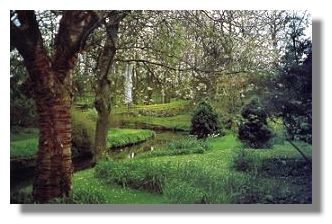
Introduction
Following a bequest to the National Trust for Scotland, the garden at Geilston, on the banks of the Clyde near Glasgow, is now open to the public. Travel writer Susan Cromarty takes us on a private tour. This article first appeared in the Scots Heritage Magazine and is reproduced here by kind permission of the editor.
Geilston
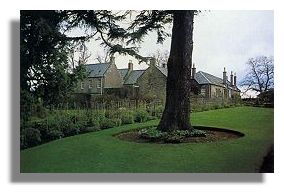 Geilston is representative of the many small country houses and estates found along the banks of the River Clyde, the history of the estate reflecting the history of Glasgow and its growing fortunes throughout the 18th and 19th centuries. The main section of the substantial stone house is thought to date from 1766, but there may have been a building on the site as early as the 14th century, possibly used by monks from Glasgow. Building survey work is still underway to establish Geilston House's exact history.
Geilston is representative of the many small country houses and estates found along the banks of the River Clyde, the history of the estate reflecting the history of Glasgow and its growing fortunes throughout the 18th and 19th centuries. The main section of the substantial stone house is thought to date from 1766, but there may have been a building on the site as early as the 14th century, possibly used by monks from Glasgow. Building survey work is still underway to establish Geilston House's exact history.
It is known that the estate was purchased in the mid 18th century by a Glasgow merchant named James Donald who owned property in and around Glasgow. The Donalds made their money importing tobacco from Virginia and exporting manufactured goods in return. They had several business partners, including the Geils of Greenock and in 1805 the Geilston estate was sold to the Geils. Throughout the 19th century the banks of the Clyde became increasingly popular with the Glasgow merchant class, with Helensburgh becoming fashionable.
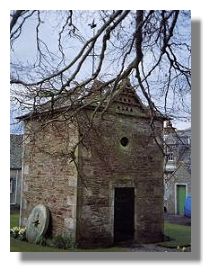 The house itself is not open to the public, but the four hectares (10 acres) of gardens and grounds are a delight. The main house, the stables and a charming doocot (pictured here), all stone built, are clustered together at the end of a long avenue of red twigged limes. The gardens extend to the north and west down and over the Geilston Burn which flows through the property.
The house itself is not open to the public, but the four hectares (10 acres) of gardens and grounds are a delight. The main house, the stables and a charming doocot (pictured here), all stone built, are clustered together at the end of a long avenue of red twigged limes. The gardens extend to the north and west down and over the Geilston Burn which flows through the property.
The Gardens
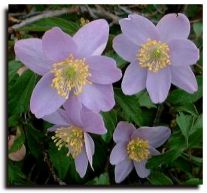 Immediately behind the house is the Walled Garden, the five metre (fifteen foot) stone walls lined with espaliered apple trees and a variety of climbers. The old potting shed is inscribed 1797 suggesting that these walls also date from this time. Walled gardens were common in Scotland from 1730 through to around 1820, but they were not usually found behind the main house and they were predominantly kitchen gardens. The position and style of the walled garden at Geilston suggests that from the outset it was developed as a 'pleasure' garden, designed for its intrinsic beauty and for the production of cut flowers.
Immediately behind the house is the Walled Garden, the five metre (fifteen foot) stone walls lined with espaliered apple trees and a variety of climbers. The old potting shed is inscribed 1797 suggesting that these walls also date from this time. Walled gardens were common in Scotland from 1730 through to around 1820, but they were not usually found behind the main house and they were predominantly kitchen gardens. The position and style of the walled garden at Geilston suggests that from the outset it was developed as a 'pleasure' garden, designed for its intrinsic beauty and for the production of cut flowers.
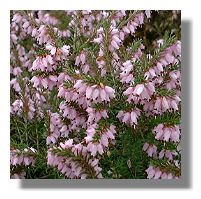 Roses and azaleas and taller Rhododendron and Acers underplanted with a variety of herbaceous shrubs all enjoy the sheltered, sunny aspect the tall walls provide. A delightful heather garden is also located here. The central feature of the walled garden is a glorious Sequoiadendron giganteum, at least 90 feet (30m) tall, dominating the centre lawn. It is estimated to be 250 years old. A row of glass houses bring on the tender vegetable seedlings and herbaceous plants ready for later Spring planting.
Roses and azaleas and taller Rhododendron and Acers underplanted with a variety of herbaceous shrubs all enjoy the sheltered, sunny aspect the tall walls provide. A delightful heather garden is also located here. The central feature of the walled garden is a glorious Sequoiadendron giganteum, at least 90 feet (30m) tall, dominating the centre lawn. It is estimated to be 250 years old. A row of glass houses bring on the tender vegetable seedlings and herbaceous plants ready for later Spring planting.
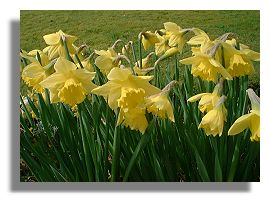 Beyond the walled garden a grass path travels down along a protected glen following the Geilston Burn as it tumbles along. The path is flanked with a mixture of ornamental trees and shrubs merging into a more native woodland garden underplanted with drifts of snowdrops, daffodils and bluebells. To the north of the burn lies the site of the former Kilmahew Estate Mill which has in its time been a grain mill, lintmill and sawmill.
Beyond the walled garden a grass path travels down along a protected glen following the Geilston Burn as it tumbles along. The path is flanked with a mixture of ornamental trees and shrubs merging into a more native woodland garden underplanted with drifts of snowdrops, daffodils and bluebells. To the north of the burn lies the site of the former Kilmahew Estate Mill which has in its time been a grain mill, lintmill and sawmill.
To the west of the House, enclosed by tall protective beech hedging, is the vegetable garden, still with the old stone dipping well in the centre which was used for watering.
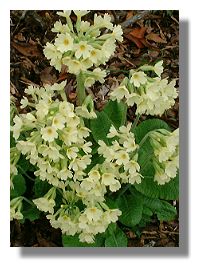 For the past twenty years Geilston has been tended with great love and skill by Head Gardener Donnie Calder. It is now open to the public from April to October, but at its best in May and June when the trees, most between 180 and 200 years old, are in full leaf, the extensive vegetable garden is in production and the Rhododendron and roses in bloom. At any time of the year though it is possible to enjoy the charming simplicity of the garden and its surroundings.
For the past twenty years Geilston has been tended with great love and skill by Head Gardener Donnie Calder. It is now open to the public from April to October, but at its best in May and June when the trees, most between 180 and 200 years old, are in full leaf, the extensive vegetable garden is in production and the Rhododendron and roses in bloom. At any time of the year though it is possible to enjoy the charming simplicity of the garden and its surroundings.



